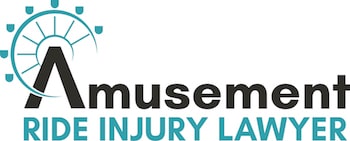Parks and Playgrounds
Entertainment areas for children can vary greatly. For example, an outing to an amusement park is a lot different than a day spent at the local playground or park. On this page, I will discuss playgrounds and parks in greater detail. If your child was injured on a playground or in a park, you want to get them help. The first step in doing this is understanding how parks and playgrounds are defined. You can learn more about these definitions here.
What is a Playground?
A playground, sometimes called a play area or a playpark, is a space that is specifically designed to accommodate child play. Many playgrounds typically exist outdoors, but there are also indoor playgrounds and play places. Even though playgrounds are designed for children, some children under or above a certain age may be excluded. This happens for the safety of all people using the playground.
Modern playgrounds include a lot of different recreational equipment. Common recreational equipment on playgrounds includes:
- Swing sets
- Seesaws
- Jungle gyms
- Slides
- Sandboxes
- Tire swings
- Monkey bars
- Chin up bars
- Playhouses
- Mazes
Playgrounds also oftentimes offer spaces to play sports, such as basketball courts, tennis courts, soccer fields, baseball diamonds, and more.
What is a Park?
A park is an area specifically set aside for recreation, enjoyment, and/or the preservation of animal life. Unlike playgrounds, parks are designed for use by people of all ages. Common features of parks include:
- Open fields for picnics, walking, or playing sports
- Biking and/or hiking trails
- Fountains
- Monuments
- Barbecue grills
- Picnic tables
- Areas for dogs to run off leash
- Bodies of water, such as ponds and lakes
- Space to play sports
- Small playgrounds
- Gardens
- Pools
- Skateparks
Parks can have playgrounds within them, but the larger area may be defined as a park.
Who is Responsible for Injury?
At an amusement park or a water park, it might be clear to you who caused an accident. For example, an accident might occur because someone operated a ride incorrectly. Or, you might want to sue the park owner because they did not properly maintain their rides. However, parks and playgrounds rarely have people in charge of operating equipment. That is the responsibility of the people using the equipment. As a result, it can be difficult to determine who is responsible for an injury.
If an injury occurred because the equipment is not properly maintained, you can contact the Department of Parks and Recreation to determine who is responsible. However, if your child was injured due to their own negligence, they are responsible for any subsequent injuries. For example, if your child used the equipment in an improper way and was injured as a result, the injury could be their fault.
Determining fault is a complicated process. If you are not sure who is responsible for an injury at a playground or a park, you should contact an attorney. They can review the specifics of your situation and help you determine the next step that you should take. To talk to a lawyer today, contact my office.

